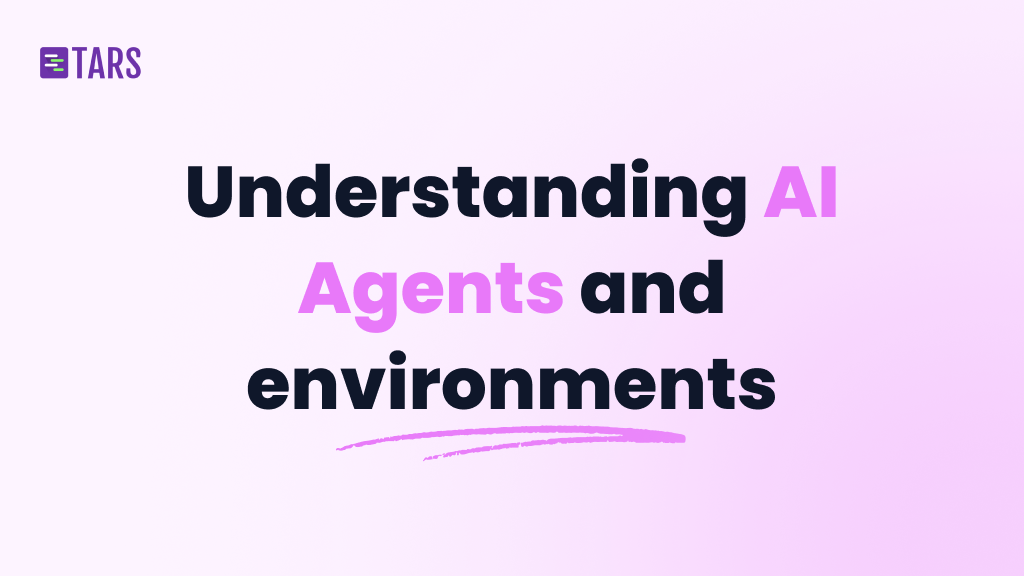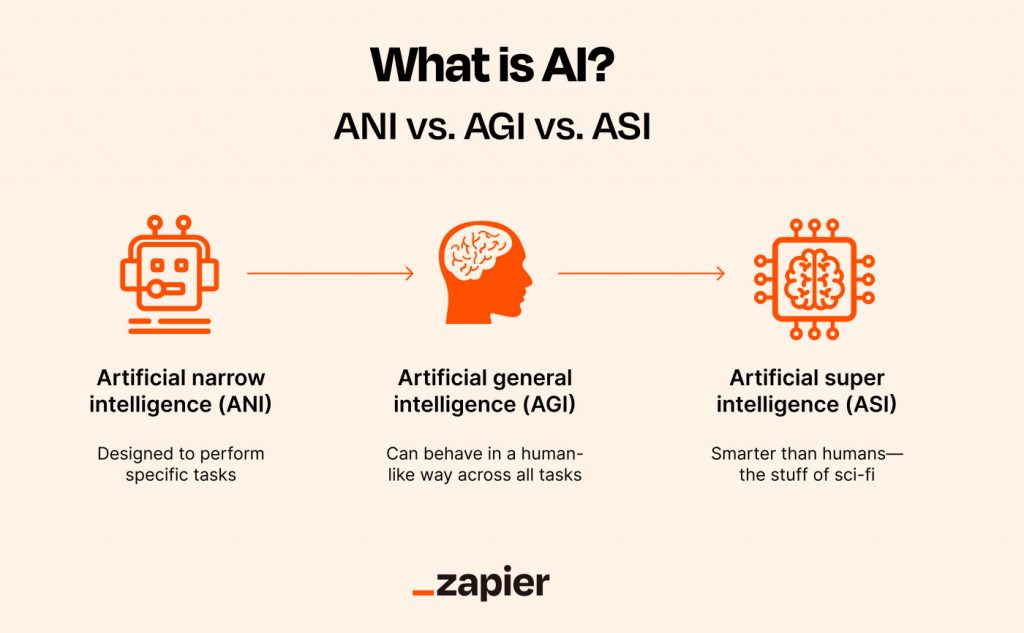Understanding AI Agents and environments – A comprehensive guide

Can machines think for themselves? Not quite yet, but AI Agents and environments are the building blocks. By understanding how AI Agents “see” and react to their environments, we can build truly intelligent systems – ones that can perceive, reason, and act effectively in any situation.
This blog dives into the core of how AI Agents interact with environments, going into the details of crafting AIs that can sense, think, and do.
What are environments?
The environment could be a virtual world where the AI Agent learns and interacts. It could also be the physical world that an AI-powered robot operates in.
What are AI Agents?
AI Agents are software entities that perceive their environment, make decisions, and take actions to achieve specific goals. The core components of an AI Agent include:
- User Request: This is the user’s question or request that the Agent needs to address.
- Agent/Brain: The central unit coordinating the Agent’s activities.
- Planning: Helps the Agent plan future actions based on goals and environmental feedback.
- Memory: Manages past behaviors and experiences to inform future decisions.

Image source: Prompting Engineering Guide (https://www.promptingguide.ai/)
Examples of AI Agents
After understanding the basics of how AI Agents work, let’s explore specific examples to see how these Agents operate in real-life scenarios. This helps in grasping their practical applications and the impact they have in various fields.
1. Math Agents
Math Agents help researchers solve and understand mathematical problems. These Agents use advanced algorithms to explore different solutions, prove theorems, and discover new mathematical insights.
Example: A Math Agent might help a scientist find a quicker way to solve complex equations or prove a new mathematical theory.
2. AgentSims
AgentSims create a virtual town to simulate daily human life using multiple AI Agents. Researchers can test and evaluate how AI Agents perform different tasks in a simulated environment. This helps in understanding and improving the abilities of AI models like ChatGPT.
Example: Researchers can create scenarios where AI Agents interact in a virtual grocery store to study their decision-making and planning skills.
3. EduChat
EduChat is an AI chatbot designed to support education for teachers, students, and parents. Using advanced language models, EduChat can answer questions, assess essays, provide teaching support, and offer emotional support.
Example: A student struggling with a math problem can ask EduChat for help and receive a detailed explanation.
4. ChemCrow
ChemCrow is an AI Agent that assists with tasks in chemistry, such as drug discovery and materials design. It uses expert-designed tools to plan and execute chemical syntheses and discover new compounds.
Example: ChemCrow can autonomously create a new insect repellent or guide chemists in discovering a novel chemical compound.
5. CodeHelp
CodeHelp is an AI tool that supports programming students by providing help without giving away solutions. It uses large language models to offer hints and guidance, helping students understand their coding problems.
Example: When a student is stuck on a coding assignment, CodeHelp can provide tips and explanations to help them progress without directly solving the problem for them.
Understanding environments in AI
An environment in AI is the external context within which an Agent operates, providing stimuli and feedback. Here’s a table showing the different types of environments.
| Type of Environment | Description |
|---|---|
| Fully observable environments | Agents have access to complete and accurate information about the state of the world at any given time. |
| Partially observable environments | Agents have limited or noisy information about the world state, requiring them to make inferences and maintain belief states. |
| Deterministic environments | These environments are characterized by well-defined rules and predictable outcomes, allowing Agents to make precise decisions based on known actions and consequences. |
| Stochastic environments | These environments introduce randomness or uncertainty, making it essential for Agents to incorporate probability-based reasoning and decision-making strategies. |
| Episodic environments | Agent actions have no lasting impact on subsequent episodes, enabling them to focus on individual tasks or scenarios independently. |
| Sequential environments | These environments involve a series of interconnected states and actions, where the outcome of one action influences future states and decisions. |
Interactions between AI Agents and environments
The interaction between AI Agents and environments involves:
- Perception: Agents perceive the environment through sensors, capturing relevant information.
- Action: Agents decide on appropriate actions based on perceived information.
- Feedback: The environment provides feedback in the form of rewards, penalties, or other indicators of success or failure.
This can be better understood with the example of a robot vacuum cleaner. A robot vacuum cleaner operates in a home environment, navigating around furniture and cleaning the floors. Here’s what the interaction process might be like:
Perception: The robot vacuum has sensors (such as infrared sensors and cameras) to perceive its surroundings. These sensors detect obstacles (like furniture or walls) and dirt levels on the floor. The robot uses this information to create a map of the area and identify where it needs to clean.
Action: Based on the sensor input, the robot decides on its next action. If it detects dirt, it moves towards the dirty area to clean it. And if it encounters an obstacle, it adjusts its path to avoid it. The robot continuously updates its path and cleaning strategy based on real-time data from its sensors.
Feedback: If the robot successfully cleans a dirty spot, it may register a reward (e.g., clean floor area). If it bumps into an obstacle, it registers a penalty and adjusts its movement to avoid similar obstacles in the future. This feedback helps the robot improve its cleaning efficiency over time, learning which paths are most effective and which areas require more attention.
Learning from environments: Reinforcement learning
Reinforcement learning is a method where Agents learn from interactions with their environment. Key concepts include:
- Rewards and penalties: Agents receive rewards or penalties based on their actions to reinforce desirable behaviors (such as the robot vacuum in the previous example).
- Markov Decision Processes (MDPs): Provide a framework for modeling decision-making problems, helping Agents optimize their behavior. For example, an AI-powered robot uses a map with different paths to decide the best way to reach its destination while avoiding obstacles.
- Q-learning and Policy Iteration: Q-learning involves trial and error to learn optimal policies, while policy iteration involves evaluating and improving policies iteratively. If a chess-playing AI tries different moves and learns the best strategy by remembering which moves led to wins—this is an example of Q-learning. Policy Iteration would come into play when the AI evaluates its current strategy, makes small changes, and repeats this process until it finds the best way to play the game.
Future perspectives and emerging trends: AI with human intelligence
The future of AI Agents and environments holds exciting possibilities. We know that AI Agents can become personalized virtual assistants, offering tailored recommendations and assisting in everyday tasks.
But in the future, AI Agents can change how healthcare, finance, insurance, customer service, or even entire cities operate, by automating tasks and improving decision-making. Understanding AI Agents and environments is crucial to making this happen.
What is the future of AI?
Humankind has made some great advancements in building AI that excels at performing specific tasks—the technical term for this is Artificial Narrow Intelligence (ANI). But the ultimate aim is to create an AI system with human-like intelligence and the ability to self-teach across all tasks. This aspirational model is termed Artificial General Intelligence (AGI).

While we wait for AI to reach these ambitious goals, we can still benefit greatly by using the AI available to us today.
AI Agents built for business needs across industries
At Tars, we have been in the Conversational AI industry for over 8 years. With AI making strides in the business landscape, we decided to go one step further with a hybrid approach, leveraging the strengths of both structured flows and Generative AI.
These hybrid AI Agents are backed by Tars Converse AI, taking on two main personas: Concierge AI and Advisor AI. Together, these custom-built Agents can help automate the customer journey from start to end, by solving specific business problems and improving customer experiences.
Explore use cases of AI Agents in Finance, Government, Healthcare, and Insurance. Couldn’t find your industry? Discover AI Agents for every need at Tars AI Agent Marketplace.
I am a content creator and marketer and a Conversational AI specialist. I enjoy crafting informative content that engages and resonates with my audience. In my spare time, I like to explore the interplay between interactive, visual, and textual storytelling, always aiming to bring new perspectives to my readers.
- What are environments?
- What are AI Agents?
- Examples of AI Agents
- Understanding environments in AI
- Interactions between AI Agents and environments
- Learning from environments: Reinforcement learning
- Future perspectives and emerging trends: AI with human intelligence
- What is the future of AI?
- AI Agents built for business needs across industries


Build innovative AI Agents that deliver results
Get started for freeRecommended Reading: Check Out Our Favorite Blog Posts!

AI Agent builders, we need to have a chat about AI’s gender bias

Time is money, so we created AI Agents that help founders save both!

How to Get Your Startup Idea Validated by Paul Graham or Kevin O’Leary? AI Agent to the Rescue

Our journey in a few numbers
With Tars you can build Conversational AI Agents that truly understand your needs and create intelligent conversations.
years in the conversational AI space
global brands have worked with us
customer conversations automated
countries with deployed AI Agents




